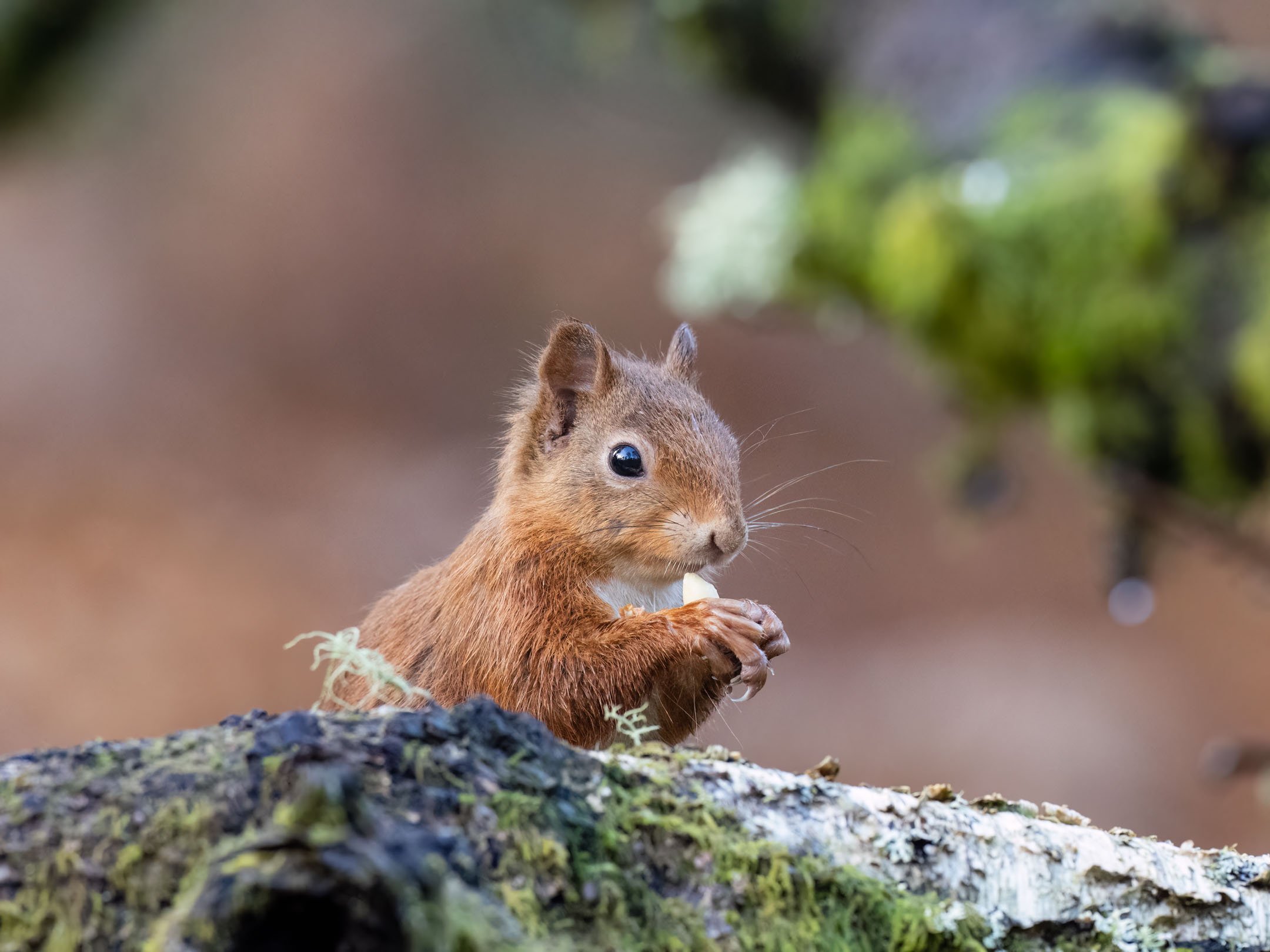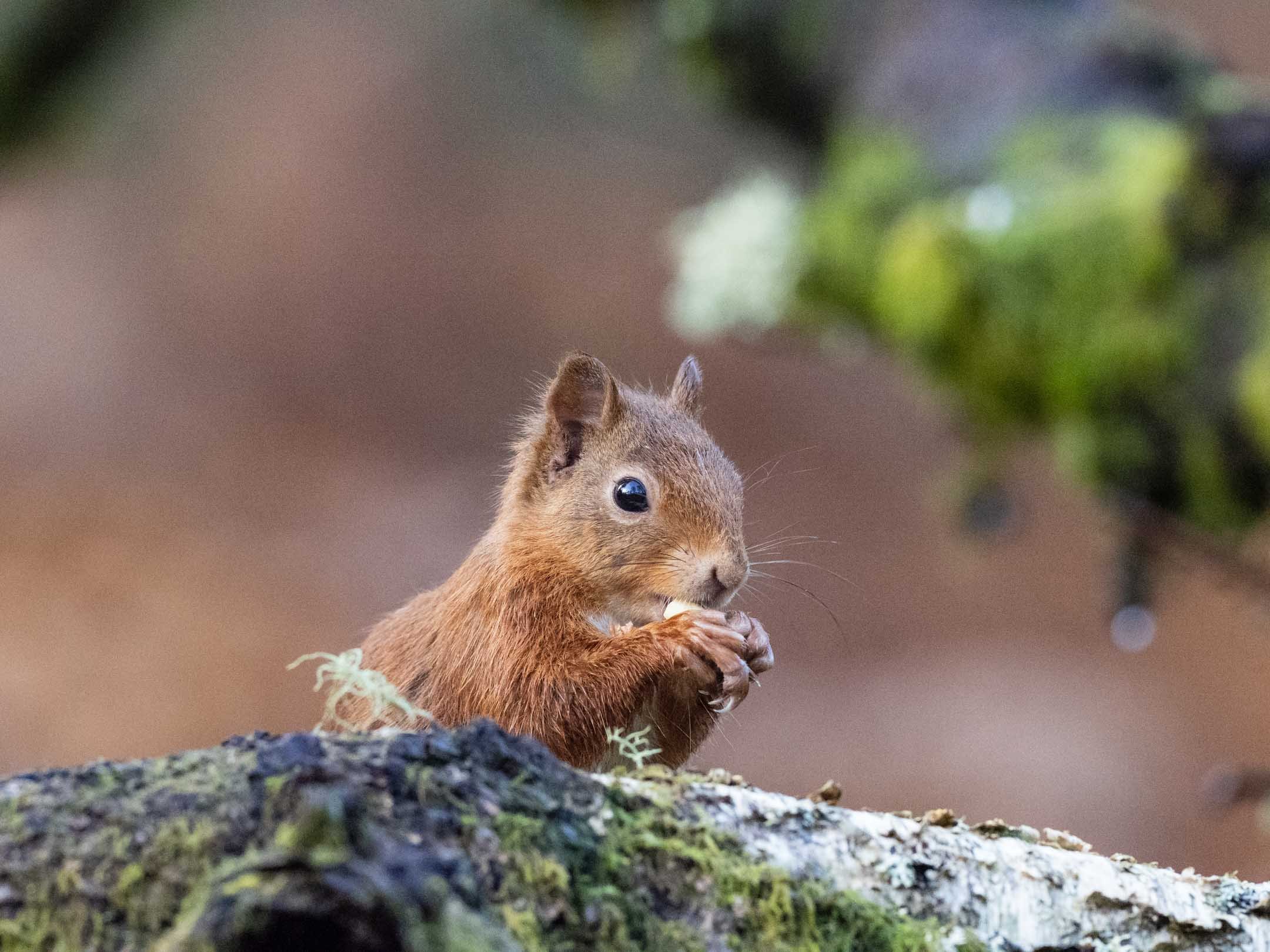November 26, 2022
OM System OM-5 for Wildlife Photography
I sometimes use the OM-5 as a second camera body to shoot with, especially when I’m travelling light with my OM-1 and the OM-5 as a vlogging camera, but also a second body. So I wanted to test out the OM-5 for some wildlife photography to see how it performs.
Mostly I’ve been using my 300mm f/4 on the OM-5 and occasionally the 40-150mm f/2.8. However, OM System sent me the 40-150mm f/4, so I thought it could be useful to also test using this lens for some wildlife photography as it’s a small lens that fits the lightweight OM-5 really well.
The image of a red squirrel above was taken with the 40-150mm f/4, I was about 4m away and the image is slightly cropped. So for small birds you do need to get very close to you subject, but for larger mammals, this lens can be a great lightweight tool to bring on a hike to keep weight down. I use my 40-150mm f/2.8 all the time to photograph animals small in the frame and for larger mammals. Beware though that the 40-150mm f/4 can not be used with teleconverters.
Exposure
Like all the OM System cameras and mirrorless cameras in general it’s really easy to get a correct exposure, and that’s because you can set highlight alerts. Every time I have something overexposed it will show red and it gives me that instant feedback that I need to darken the scene, usually by lowering my ISO or increasing the shutter speed.
Focus
The autofocus is really quick and reactive. It’s got 121 points which is the same as the EM1 Mark 3, obviously it doesn’t have the incredible autofocus capabilities of the OM-1 which has AI bird detection and dog & cat detection. However, I wouldn’t really expect that from this little camera. I’ve been photographing for years with the EM1 Mark 2 and the EM1X and it has served me just fine.
I tend to use one small focus point in the middle for most of my subject, and I change it to maybe one surrounded by four for birds in flight or maybe even a five by five grid, just to cover more of the frame.
My process is to get a safe shot, then I will start thinking about composition by focusing and recomposing. If I struggle to get focus I use manual focus with peaking so that what is in focus will be highlighted by a colour.
Image Stabilisation
The OM-5 has 6.5 stops of IS and up to 7.5 stops with a lens that supports it. I often photograph using very slow shutter speeds and take advantage of the excellent image stabilisation so that I can shoot at really low ISO and get the best detail in my images.
ISO Capabilities
The ISO capabilities of the OM-5 camera is actually pretty good. I’ve done some tests that you can see in the images below. I use noise reduction software on most of my photos especially from ISO 800 and above. I tend to use Topaz DeNoise, now Topaz Photo AI because it works really well with Lightroom and makes for a quick workflow. But if you don’t want to spend that kind of money then the OM System Workspace has a really good de-noising algorithm as well.
You can actually push the ISO quite high with this camera, my workflow is basically to get a couple of safe keepers. Then I will lower my shutter speed so I can lower my ISO because I will always try and go for the highest quality image by lowering the ISO
Below you can see 6 photos taken at ISO 3200, 5000, 8000, 12800, 16000 and 20000. I did a simple edit and ran them through Topaz DeNoise so you can see before and after.
Frames Per Second
The OM-5 can shoot 10 frames per second with the electronic shutter. I always use the electronic shutter which is silent because when photographing wildlife I always want to be as quiet as I can. 10 frames per second is more than enough for most wildlife subjects. You can change it to High Speed Burst, which gives you a maximum of 30 frames per second. However, at high burst the exposure and auto focus is locked after the first image, so if the animal moves from where you first focused, you’ll need to re-focus to get a sharp image.
Pro Capture
Incredibly beneficial to wildlife photography is that the OM-5 has pro capture. It is limited to 14 images pre shutter, but that is still quite a lot considering most cameras don’t even have anything like pro capture.
If you don’t know what pro capture is, it’s a feature that allows you to get photos of an action that just happened. Perfect when waiting for a bird to take to flight for an action image. You can read more about it and learn how to set it up in my post on Pro Capture here.
Weather Rating
As a wildlife photographer, it is really important that the camera can take a punch. I take it out in all kinds of conditions like snow, freezing cold and really wet weather. So having the IP53 weather rating on the OM-5 which is the same as pretty much all the high end OM System cameras is a real advantage. It means I never worry what weather I go out in, I keep using my gear and I’m confident that it keeps working.
High Resolution
The OM-5 can be used handheld to get a high resolution image. You can get a 50 megapixel photo handheld and that is a feature that I actually do use every now and then for wildlife photography. It’s pretty specific situations because you need a subject that’s going to hold still for a little bit of time.
I tend to use this for quite slow moving subjects for instance, like an owl or something like that. The image below is of a tawny owl I took with the OM-1 earlier this year. Note the high ISO I used at twilight to capture this shot and I didn’t need to use any noise reduction software on this image.
Camera Body
The body size of the camera is obviously really small, which is the whole point of this camera, it’s supposed to be very small and lightweight so you can take it with you anywhere. I find that it’s comfortable grip, except when I’m shooting intensely for hours on end, then I notice that my hands are a bit large for this camera.
Custom Modes
One of the things I really like as a wildlife photographer is using the custom modes and I will set each one up depending on what I’m shooting. Usually I’ll have a default custom mode for pro capture and one for birds in flight.
There is only one C mode on the dial, but you can configure buttons to have quick access to the other 3 custom modes. The OM-5 doesn’t have that many buttons on its small body, but I’ve found a couple of them that I can sacrifice to be able to use a couple of custom modes.
My Menu
The OM-5 has a My Menu which is really handy as it lets you save the settings you change on a regular basis to have quick access.
Check out my OM System for Wildlife Photography Course
Now includes updates for OM-1
























Hi
Have you anytime used Fujifilm XT cameras for bird photography? Sitting on the fence if to let go my XF100-400 lens and migrate to OM for birds exclusively.